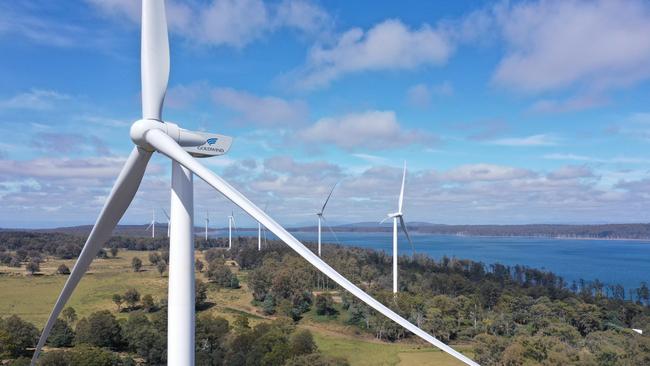Backlash over proposed Tasmanian wind farm’s toll on eagles
There are calls for Tanya Plibersek to stop a wind farm approved for a Tasmanian wedge-tailed eagle hotspot despite projections it could kill up to 81 of the endangered top-end predators.

Tasmania’s approval of a major wind farm, despite the proponent’s projections it could kill up to 81 endangered eagles, has prompted calls for federal intervention.
The proposed 300-megawatt St Patricks Plains wind farm – comprising 47 turbines 231m high in Tasmania’s Central Highlands – was on Monday approved by the state’s Environment Protection Authority.
However, opponents on Tuesday flagged a potential legal challenge and urged Environment Minister Tanya Plibersek to block the project, given the likely impact on the endangered Tasmanian wedge-tailed eagle.
According to the EPA, proponent St Patricks Plains Wind Farm, owned by Korea Zinc, estimates the blades will kill on average two eagles a year, or 41 to 81 eagles across the farm’s 30-year lifespan, based on mitigation reducing 58.5 per cent of collisions.
The proponent argues its use of technology to halt turbines when eagles approach could further improve collision reduction to 85 per cent, and the total number of deaths to between 11 and 33.
However, eight eagles have been killed at the neighbouring Cattle Hill Wind Farm in the past four years, despite the use of the same IdentiFlight collision-avoidance technology.
“IdentiFlight represents an unreliable technology,” Victoria Onslow, of the local No Turbines Action Group, told The Australian.
St Patricks Plains project spokeswoman Donna Bolton said “learnings” from Cattle Hill had improved IdentiFlight’s effectiveness, and these would help keep eagle mortalities at her wind farm to “the lower end” of the modelling.
The EPA imposed a $100,000 “offset” to be paid for each eagle fatality, but opponents questioned how many eagles would be found by monitoring, as well as the morality of the arrangement.
“The sacrificial slaughter of birds … is an unethical bounty monetising the environment,” Ms Onslow said. “Developers should instead avoid high-density eagle sites.”
It is a view shared by eagle experts, who have repeatedly called for wind farms to be built in lower-density eagle areas.
The EPA said the St Patricks Plains wind farm site had a “very high” presence of wedge-tailed eagles: about 40 birds, and 17 nests across the site or within 1km of its boundary.
It is estimated only 220 Tasmanian wedge-tailed eagle breeding pairs remain, and there are fewer than 1000 birds overall.
Experts warn there is insufficient consideration for the cumulative impact of multiple wind farms and fear Tasmania’s “wind rush” poses a “major threat” to the species’ survival.
Ms Onslow said a third wind farm for her area – the 58-turbine Bashan Wind Farm – was only 10km away from the St Patricks Plains site.
Ms Bolton said the St Patricks proponent, also known as Ark Energy, had “worked hard to avoid and minimise potential impacts to eagles”, reducing the number of turbines from an original 67 to 47.
“The latest technology and proactive avoidance have been combined to achieve the least impact possible to eagles and other threatened species while still delivering the new renewable energy generation that Tasmania needs,” Ms Bolton said.
The EPA acknowledged cumulative impacts “may be significant” and a lack of certainty over “the number of mortalities that can be considered acceptable”.
“However, the measures and conditions proposed are considered precautionary and sufficient to minimise eagle deaths to a level unlikely to have a significant impact,” it said.
Collision with electricity infrastructure, poisoning and shooting, as well as habitat loss due to logging and land clearing, are blamed for the decline of wedge-tailed eagles.
Ms Plibersek declined to comment but her department said it was reviewing the EPA assessment report. Ms Plibersek is not bound by the state decision and must make her own decision under federal environmental law.






To join the conversation, please log in. Don't have an account? Register
Join the conversation, you are commenting as Logout